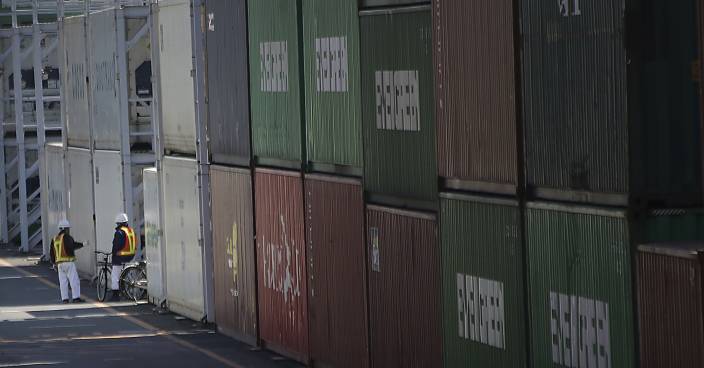Japan recorded a trade surplus for September of 139.6 billion yen ($1.2 billion), but exports fell 1.2 percent from the previous year, marking the first decline since 2016, after several natural disasters.
Trailing exports are also reflecting uncertainties over trade tensions set off by President Donald Trump's policies. Declining U.S.-China trade generally hurts the export-dependent Japanese economy.
September imports rose 7 percent, according to data released Thursday by the Ministry of Finance.
During the month, a major earthquake hit the northernmost island of Hokkaido, causing fatal landslides and widespread blackouts, while a typhoon struck the western Kansai area and temporarily shut down a major airport.
Those events followed deadly flooding in southwestern Japan and a quake in Osaka earlier this year.
The last time Japan's exports fell on-year was in November 2016, when they slipped 0.4 percent, data show.
For the six months through September, the first fiscal half, exports grew 5.2 percent, while imports rose 10 percent.
The Trump administration has plans to pursue trade agreements with the European Union and Britain, as well as with Japan. The administration recently reached a deal with Canada and Mexico to rewrite the North American Free Trade Agreement.
Follow Yuri Kageyama on Twitter at https://twitter.com/yurikageyama
On Instagram at https://www.instagram.com/yurikageyama/?hl=en
Japan's trade deficit persisted in March as imports surged 31% thanks to soaring oil prices and a weakening yen.
The deficit of 412 billion yen ($3.2 billion) for March was lower than the previous month’s 670 billion yen but was quadruple analysts’ estimates and a reversal of the surplus of 615 billion yen recorded a year earlier for the world's third-largest economy.
The weaker yen helps make Japanese exports more competitive overseas and fattens profits when they are converted from dollars to yen, but it also raises costs both for consumers and businesses.
Exports climbed 15% in March to 8.46 trillion yen ($65 billion) while imports were 8.9 trillion yen ($68 billion).
Costs for imports of fuels like oil, gas and coal soared just over 80% from a year earlier, while food imports jumped 22% and chemicals rose 42%. Meanwhile, Japan's vehicle exports slipped 1.2%, with the number of vehicles shipped overseas dropping more than 14%
Japanese automakers and other manufacturers are struggling with production cuts due to pandemic-related disruptions in supplies of all-important computer chips and other components.
Economists are forecasting a strong rebound once such problems subside. But new export orders have fallen, suggesting export growth has remained weak in April, Tom Learmouth of Capital Economics said in a report.
“And given that there is no immediate sign of chip shortages easing for carmakers, exports will probably remain weak until later in the year," he said.
Preliminary data for the fiscal year that ended in March showed exports jumped almost 24% but were outpaced by imports, which climbed 33%. The fiscal year deficit of 5.4 trillion yen (nearly $42 billion) was the highest in seven years.
The Japanese yen has weakened against the dollar as the Federal Reserve has begun raising interest rates to tamp down inflation that is at 40-year highs. Higher rates attract investors who buy dollars and sell other currencies, like the yen.
Despite rising prices for imports, Japan's central bank has kept its key interest rate at minus 0.1% for years, trying to pull the economy out of the doldrums as the country ages and its population shrinks.
That means Japan is paying more for imports as the war in Ukraine plus rising demand from economies recovering from the pandemic push prices of oil and other commodities higher.
The bill for imports of fuels such as oil, gas and coal surged 87% in the last fiscal year, the figures showed.
Crude oil prices are about 40% higher in this year alone, with U.S. benchmark crude oil trading around $100 to the barrel and Brent crude, the international basis for pricing, slightly higher.


